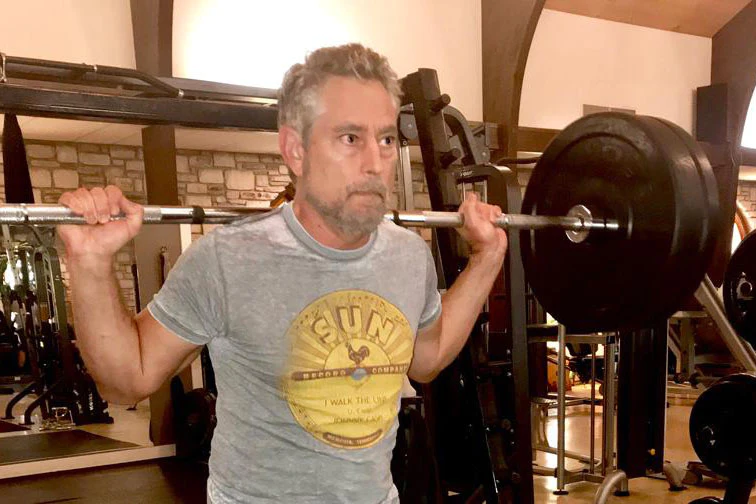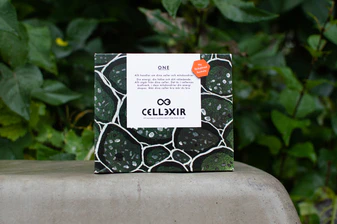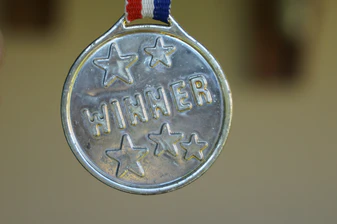Blogg
Exercise Recovery and Cellexir: The Science Behind the Benefits

Part I – Inflammation
Exercise recovery is a hot research topic, mainly because those of us who participate in a sport, or train intensely deal with recovery time on a regular basis. Those of us over 40 seem to care about it more, because aging and exercise recovery are related. In fact, it is almost a cliche that longer recovery time is one of the first ways athletes notice that aging is affecting them.
This is a complex subject, involving interlinked cellular and systemic mechanisms, and while research is ongoing, we do know some important things about this topic well enough to apply them to the practical issue at hand: shortening recovery time, and improving our response to intense exercise.
It is worth looking at some of the scientific details that have been discovered regarding athletic recovery. What is this phenomenon that prevents us from just running back-to-back races, or powerlifting every day? What is happening in our cells and our bodies during that interval we call recovery?
One aspect of exercise recovery is inflammation. Intense exercise produces inflammation, which has to be managed and controlled, in order for our bodies to prepare for the next round of exercise. Some degree of inflammation is expected by the body, and can even help stimulate muscle growth and adaptation, but excessive inflammation invites problems, and prolongs recovery time.
This is one reason why recovery time increases with age; our ability to manage inflammation decreases with age. That sounds like bad news, but the good news is that inflammation can be strongly influenced by things like what we eat, and by certain supplements.
One supplement that has been proven to favorably impact recovery time is Curcumin. Research has shown that Curcumin favorably modulates the cellular mechanisms that are the basis for inflammation, and it does so in a very fundamental way: epigenetically reprogramming cells to reduce inflammation at its root.
The shear breadth of these epigenetic “reprogramming” effects is breathtaking. A study in the British Journal of Pharmacology found that “At the molecular level, [Curcumin] has been shown to exhibit anti‐inflammatory activity through the suppression of numerous cell signaling pathways including NF‐κB, STAT3, Nrf2, ROS and COX‐2.” (1) For the uninitiated, this is an all-star lineup pf inflammation influencing mechanisms.
How does this impact health, aging, and exercise recovery? As it turns out, by influencing cellular inflammation through so many mechanisms, it produces a very wide range of real-world beneficial effects that can be measured, and felt at the systemic level.
With respect to athletic exercise recovery, effects include a measurable reduction in markers of muscle damage in resistance training as shown in a study published in the European Journal of Applied Physiology. In this study, the Curcumin treated subjects were able to lift nearly twice as effectively at the same recovery interval, and experienced 40% lower decline in strength during the entire recovery interval.(2)These are impressive effects.
In other research designed to simulate the effects of downhill running — long known to be punishing in humans, mice fed Curcumin before exercise showed significant reductions in recovery time, as well as biomarkers of muscle injury.(3)
But does this hold true for humans too? A study in Journal of the International Society of Sports Nutrition found that downhill runners had significantly less muscle soreness, and significantly less evidence of muscle damage on MRI scans, when pre-treated with Curcumin.(4)
Runners World calls Turmeric (the spice from which Curcumin is derived) “The One Spice Runners Should Use,” (5) for good reason.
Curcumin is one of the evidence-based ingredients that help Cellexir optimize cell function, improve vitality, and as research shows, reduce athletic recovery time. In upcoming articles, we will look at other benefits of Curcumin supplementation, and the many ways that Curcumin and the other ingredients in Cellexir provide strategic support for our cells, our active lifestyles, and even athletic performance.
- Kunnumakkara AB, Bordoloi D, et. al., Curcumin, the golden nutraceutical: multitargeting for multiple chronic diseasesBr J Pharmacol. 2017 Jun; 174(11): 1325–1348.
- Tanabe Y, Maeda S, Akazawa N, et al. Attenuation of indirect markers of eccentric exercise-induced muscle damage by curcumin. Eur J Appl Physiol. 2015;115(9):1949–1957. doi:10.1007/s00421-015-3170-4
- Davis, JM, Murphy, EA, Curcumin effects on inflammation and performance recovery following eccentric exercise-induced muscle damageAm J Physiol Regul Integr Comp Physiol. 2007 Jun;292(6):R2168-73
- Drobnic et al. Journal of the International Society of Sports Nutrition 2014, 11:31
- https://www.runnersworld.com/women/a20798707/one-spice-runners-should-use/
Nyhetsbrev
Anmäl dig till vårt nyhetsbrev










